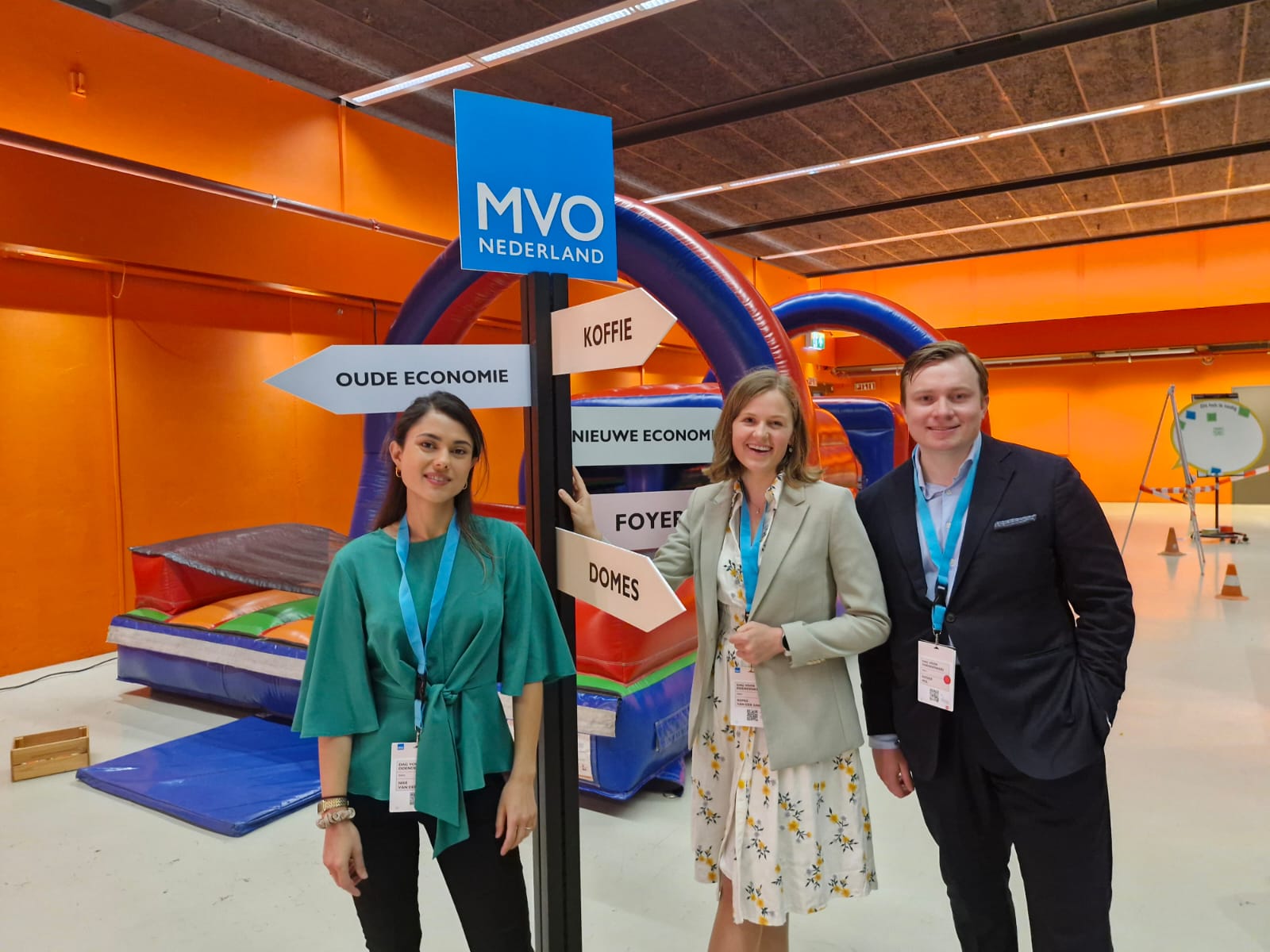On June 7th, the consultants of Intire attended an engaging panel discussion on the Corporate Sustainability Reporting Directive (CSRD) at the “Dag van Doendenkers” organized by MVO Nederland. The event shed light on the complexities and challenges companies face while moving to the new economy. In this blog, we delve into three key dilemmas when dealing with CSRD, explore the arguments on each side, and share our perspective.
CSRD dilemma 1: Reporting based on relevance vs. sector norms
One of the key dilemmas around dealing with CSRD raised during the panel discussion was, whether companies should focus their reporting on the topics they deem most relevant to their organization or if they should stick to the common topics that peers in their sector are reporting on.
Reporting on topics most relevant to the organization allows companies to present a more precise picture of their sustainability efforts. This tailored approach allows organizations to focus their reporting efforts on the most relevant topics. However, to base your reporting topics on common sector topics also has its benefits. Like ensuring that reports are comparable across companies within the same sector, creating a complete picture of the organization and avoiding that only the positive side of the company are highlighted.
To deal with this dilemma, we advise executing a Double Materiality Assessment. At Intire we start with the full list of standard reporting topics and supplement these with topics specific to your organization or sector. Through a thorough process with internal and external surveys, only the most relevant topics are selected for your organization to focus their reporting efforts on.
CSRD dilemma 2: implementation timing
Next, is the dilemma of when to start with the implementation of the CSRD. Is it smarter to take a proactive stance, allowing you to address challenges and adapt timely, thereby minimizing last-minute rushes? Or is it better to take a reactive approach, allowing your company to learn from the experiences of early adopters and front-runners?
While it is crucial to avoid the risks of incomplete or rushed reporting, valuable information and guidance are now available that were previously lacking. Starting early can mitigate compliance risks and allow for thorough preparation. Conversely, waiting offers the advantage of learning from early adopters and not having to invent the path to compliant reporting alone.
Our advice would be to start as early as possible. By focussing your efforts on the “must haves” the organization can invest their efforts in those elements that are necessary to get ready for reporting while making use of the phase-in requirements where possible. A combination of proactiveness where needed and reactiveness where possible, minimizes last-minute rushing and leaves room to benefit from lessons learned.
CSRD dilemma 3: End-responsibility for the sustainability report.
The last dilemma raised during the panel discussion was about who to make end-responsible for the sustainability report. Different options were discussed, such as hiring a Chief Sustainability Officer (CSO), leaving it with the CFO, or placing it on the plate of the CEO.
During the discussion, the views on who is the best fit for this task differentiated. A CSO could provide specialist knowledge and can put their sole focus on connecting different business units to creating the sustainability report, which may not directly be expected from a CFO or CEO. Others would argue that not the CSO, but the CEO should be responsible, because managing sustainability comes with a lot of important strategic decisions. For making the CFO responsible for the sustainability report, there were some compelling arguments too. Since the CFO is already responsible for financial accounting and creating the annual report, giving them the responsibility of the sustainability report would make sense for them given their reporting knowledge and expertise.
In our experience, we see that every company approaches this differently. The best results are achieved when the responsibility is shared within the company. That is why, at Intire, we always recommend creating a multi-disciplinary team to ensure you have the right people at the table for each department.
Solving dilemmas
Whether deciding between relevance and standardization, immediate action or strategic delay, or the ideal leadership for sustainability reporting, each choice presents unique benefits and challenges. By carefully considering these dilemmas, companies can better navigate the complexities of the CSRD, enhancing their sustainability performance and reporting. At Intire, we guide companies through these critical decisions, ensuring they make informed choices that align with their strategic goals and regulatory requirements.
Interested to know more? Reach out to us to see how we can best help your organization navigate the dilemmas of the CSRD.



